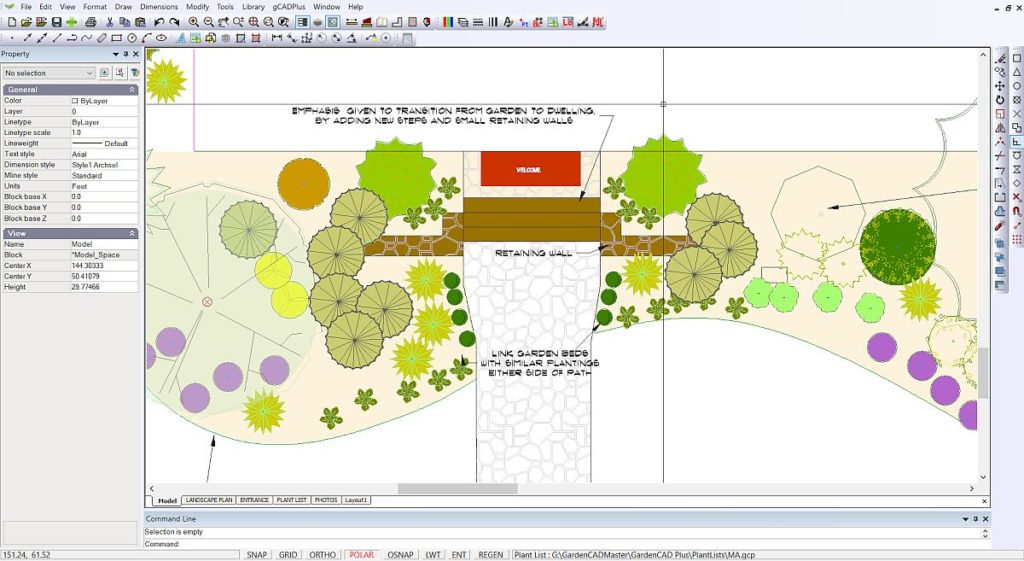Harmonizing the elements
It is rather obvious, but when looking at the whole design – the big picture – it is important that all elements (materials, color, hardscape materials etc.) work together. How to do this? By paying attention to the dominant elements, making sure that there is some repetition, good interconnections between spaces and wherever possible follow the rule of placing species in groups of three.
Dominant spaces
Try and make one element or one space the dominant element in a composition. Eg, it could be an entertaining space with a subspace for cooking defined by a change in level. In the figure below, the entertaining space is dominant with the unifying planting of yellow Anigosanthos and a clear connection to a paved breakout area below.
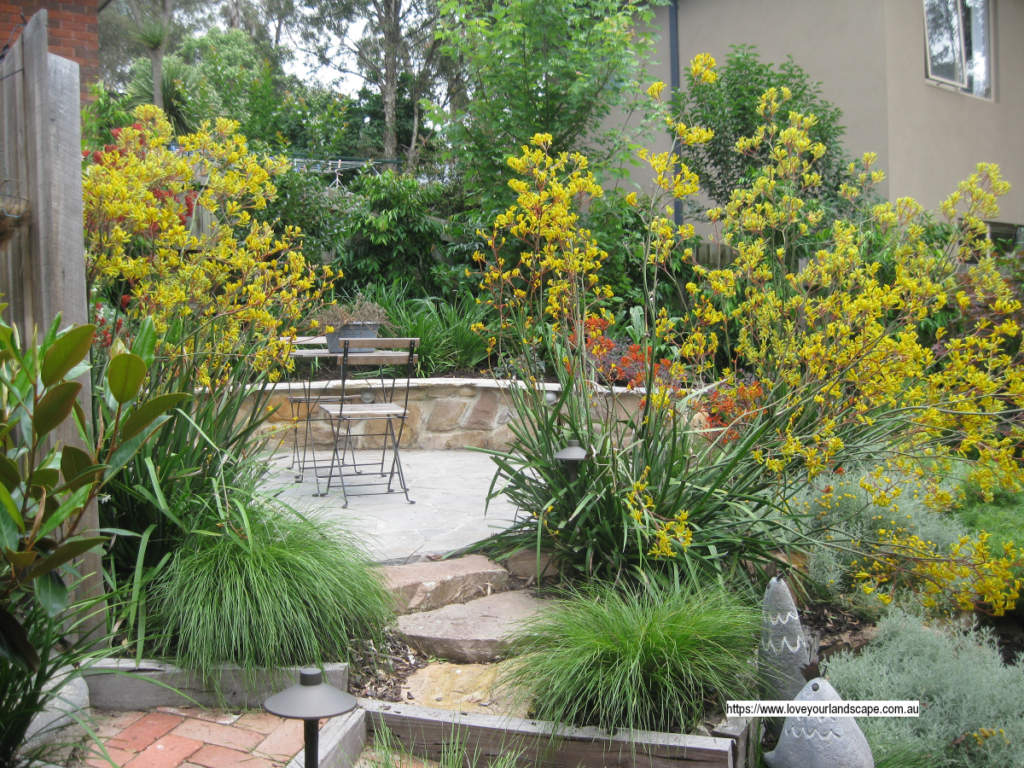
Here is another view illustrating this concept of providing a dominant element to a design. The entertaining area to the right and the striking paving is the dominant feature and drives the eye. That space is however linked to another (raised) more intimate space with the igloo enclosing it.
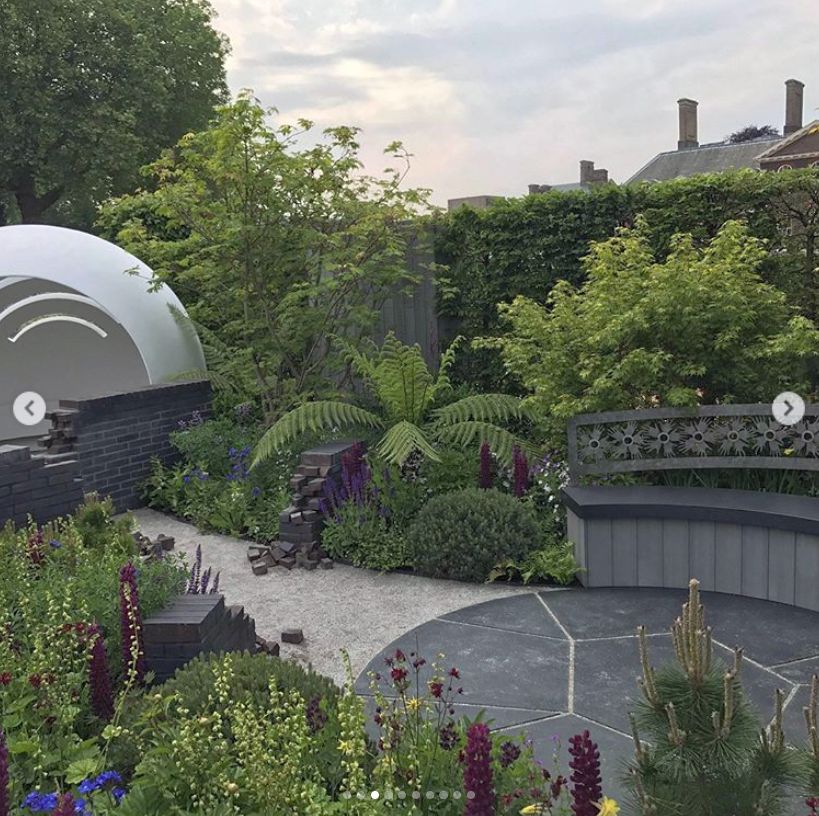
The same principles apply to larger spaces. Here a conceptual design for a rear garden features two linked spaces, the paved area to the left is linked by a change in level to a second large equally dominant space across the complete site.
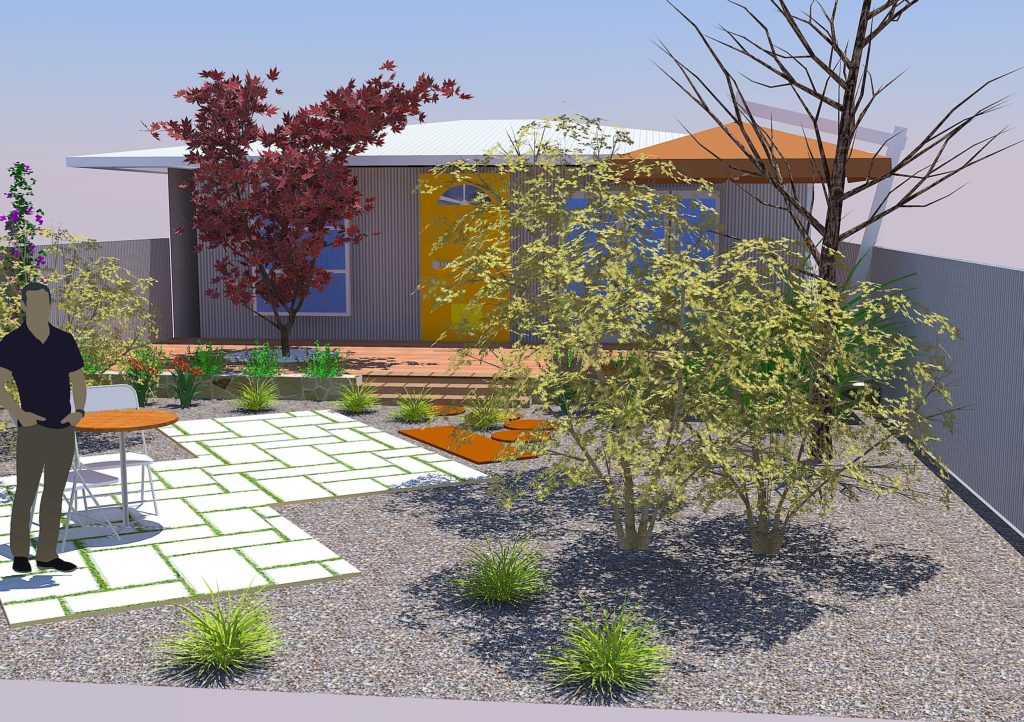
Don’t ignore the dimension of height. Here, the triangular deck is the dominant feature, but the striking espaliers give a sense of enclosure.
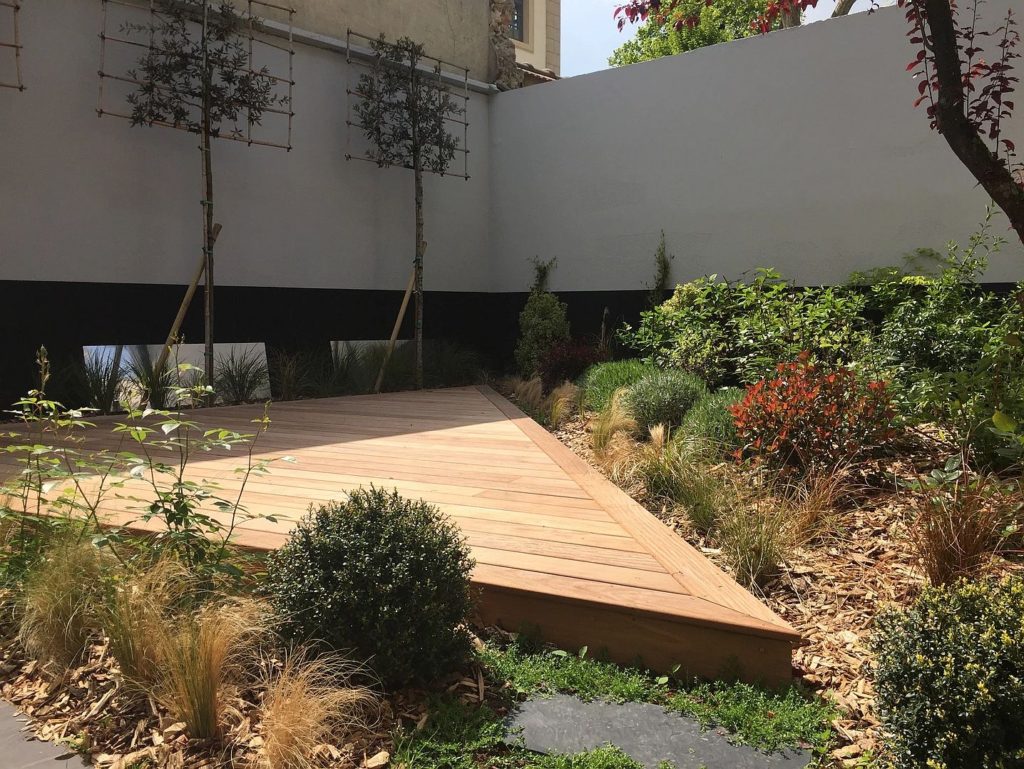
These spacial elements help unify and tie together a piece of landscape design work.
Repetition
Repeating elements such as planting can reinforce the spaces shown above. The espaliered plants performed that function in the courtyard above while the sunken entertaining area space shown below is reinforced by the repeated box hedging planting.
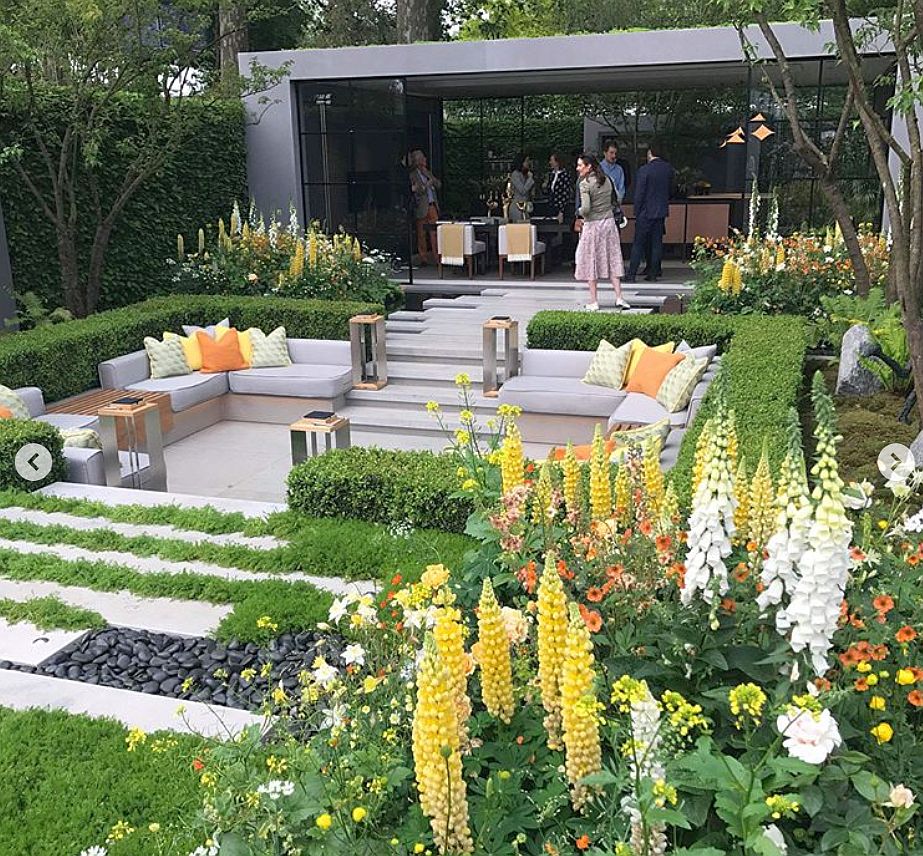
This idea of strengthening spaces can be applied to hardscape elements as well as planting. Washed river peddles are used in the example below to add interest to some steps.
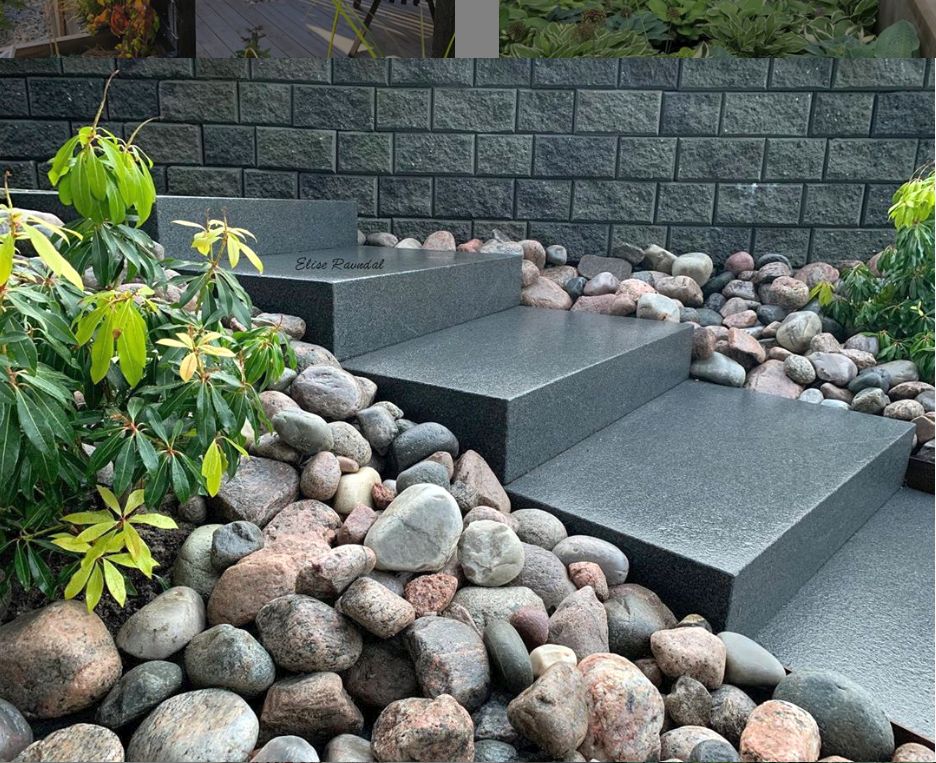
Here a restricted palette of plant species with repetitive planting of grasses reinforces the boardwalk. The repetition even extends to the planting in containers on the boards.
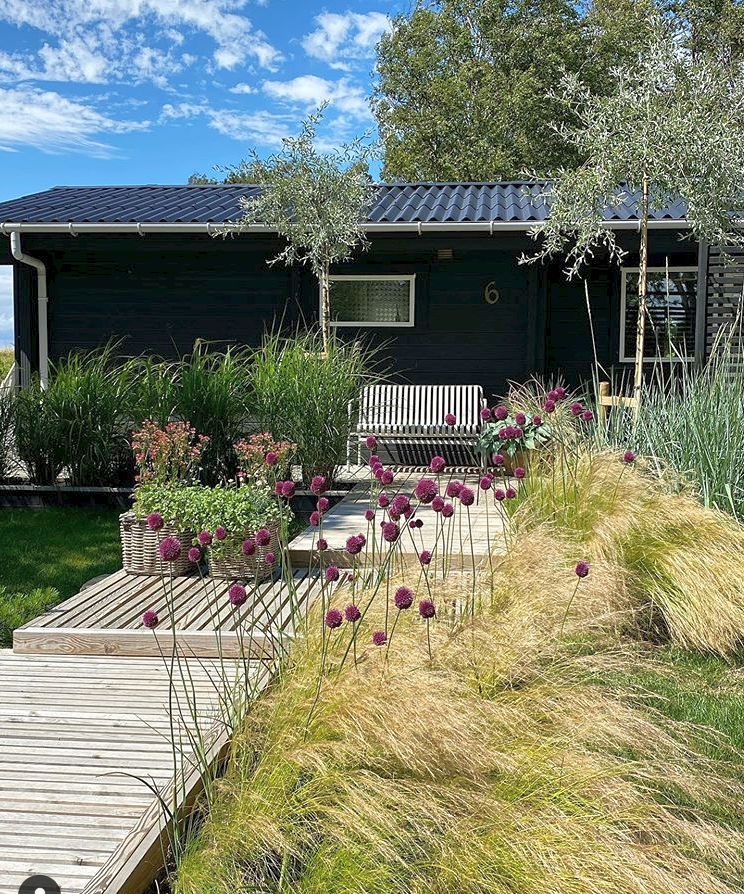
Notice that the designer has restricted herself to a single type of paving material – boards. To provide interest these have been turned at 90 degrees on each level.
Here is an example showing how something as mundane as a vegetable garden can be enhanced using repetition.
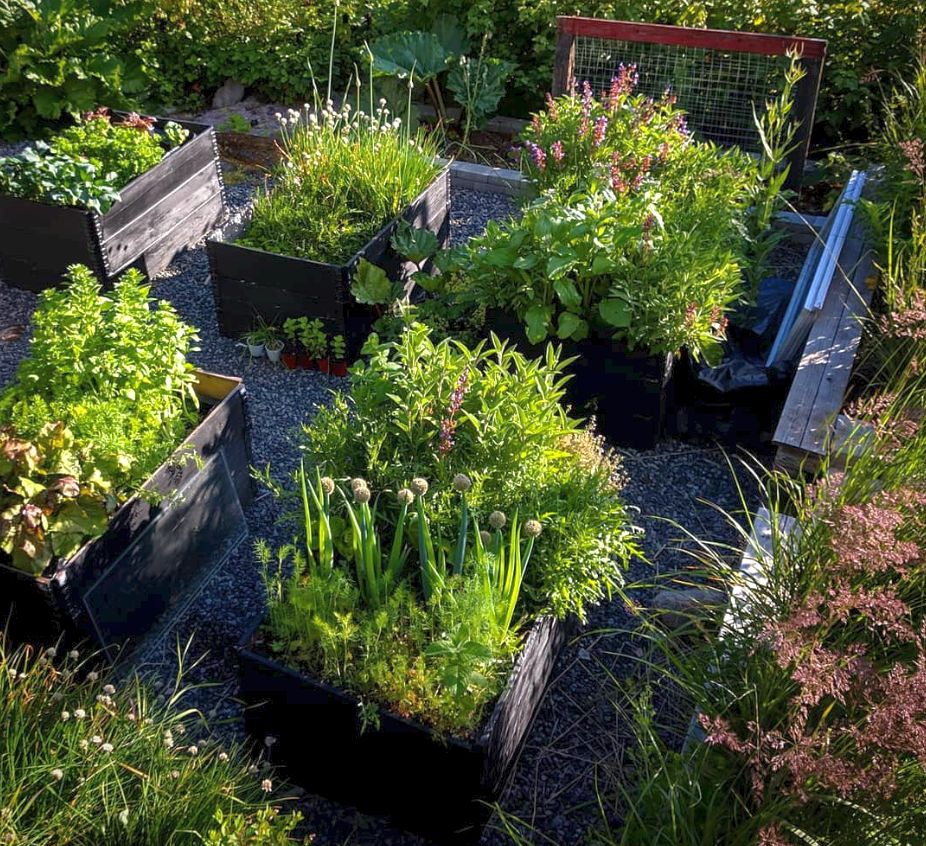
Here is an example of repetition of elements along a walkway. The path is long with changes in level and the visitor is drawn along the path.
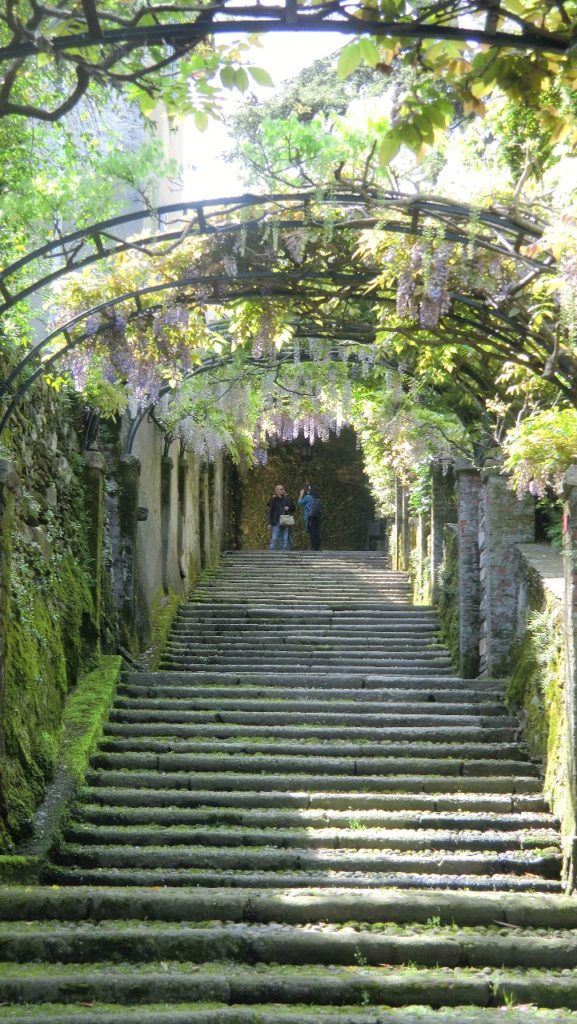
Tip: If you can ‘pick up’ colors or materials from the buildings nearby, that can unify a design.
Repeating planting elements can certainly unify a design. Here groups of Hollyhocks and white hydrangeas line this soft herbaceous border. The lawn is the dominant feature, but the planting along the border reinforces that and gives a sense of enclosure.
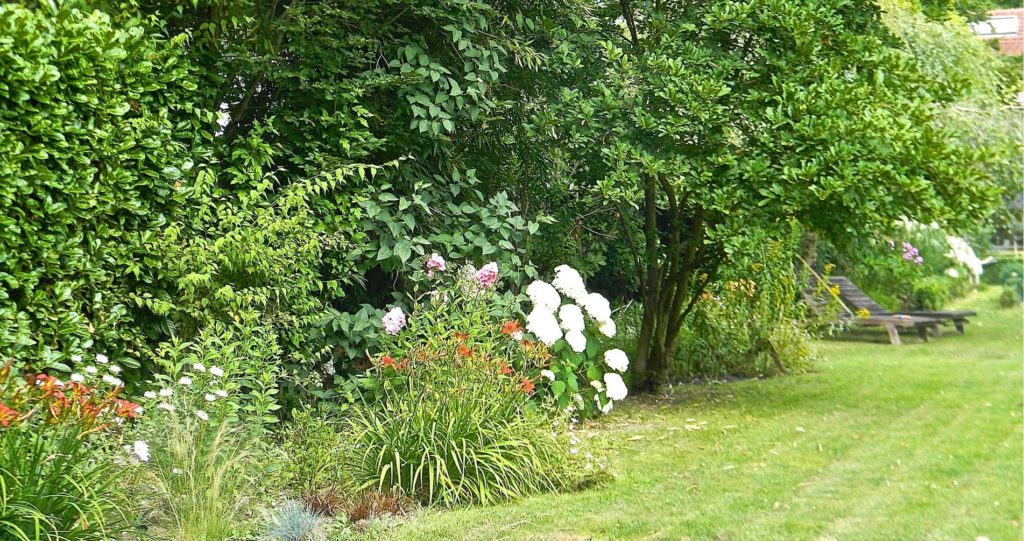
Interconnections between spaces
It is important to pay attention to how spaces in gardens are connected. In the figure below, taken from a design for a site in NE USA created using gCADPlus CAD software, much attention has been given to defining the entrance and the transition between the garden and house by installing new steps and small stone retaining walls matching the stone path which in term matches the color of the house itself.
Garden beds to the left and right of the entrance are also linked by repeating the same pattern of planting on either side of the path.
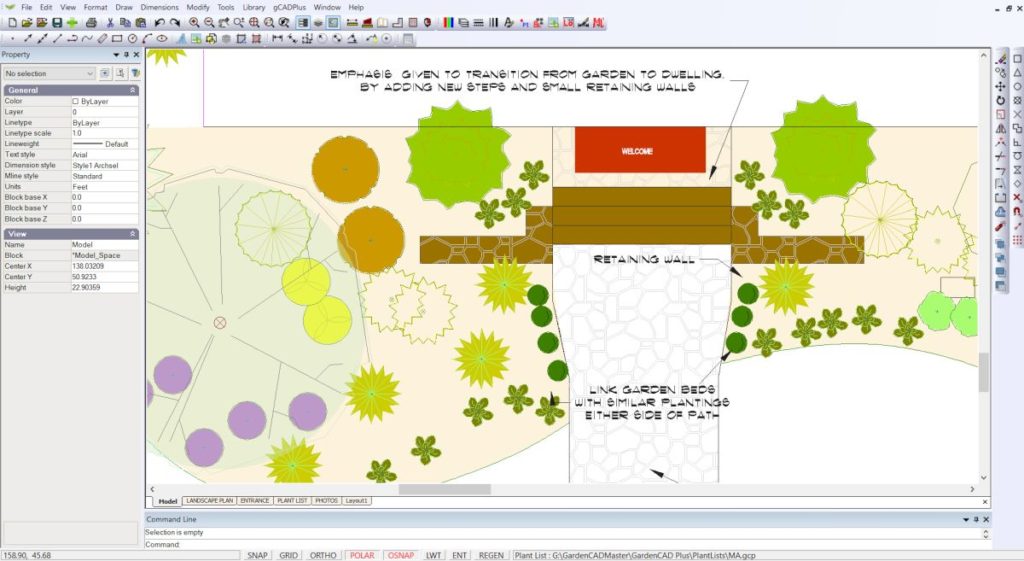
The design is further enhanced by adjusting the planting symbols using groups of odd numbers. The underlying structure is made to look less formal in this way.
